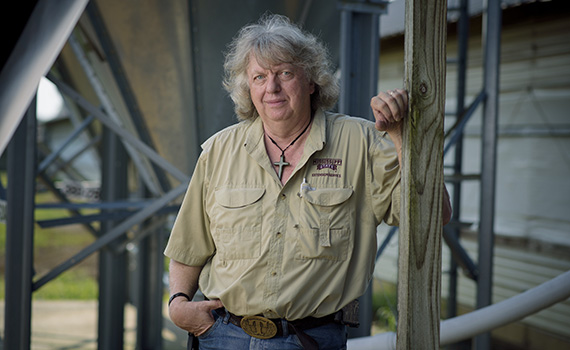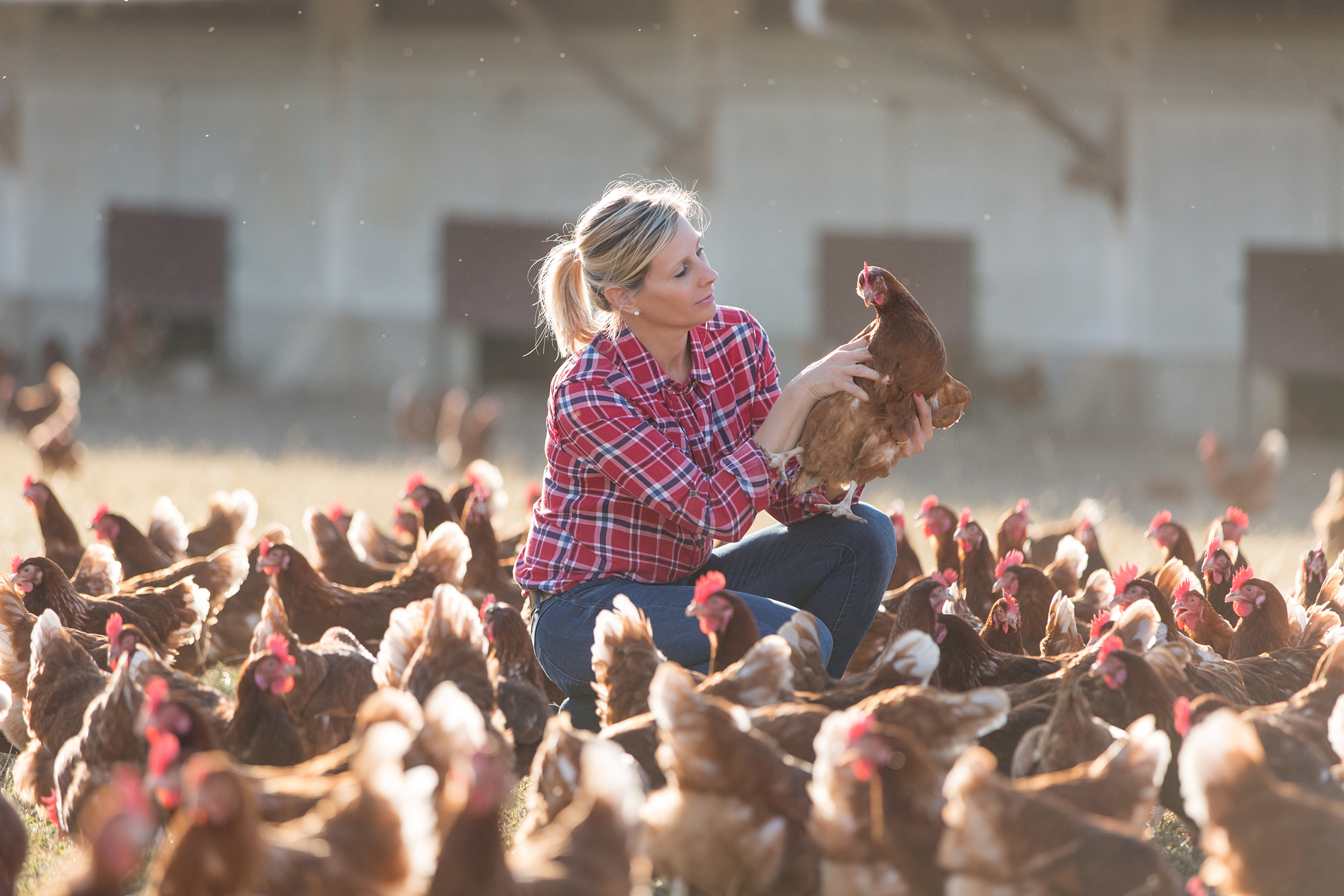



Mortality composting the right way: Tips for poultry producers
Mortality disposal is critical to every poultry farm’s biosecurity programme. Composting is a safe, biosecure and efficient way of managing everyday losses. However, it must be done correctly or issues can arise
Words Tom Tabler, PhD
Extension Professor
Mississippi State University Extension Service, Poultry Science Department
Composting is the biological decomposition and stabilisation of organic matter under controlled conditions. It’s an aerobic process, meaning it requires oxygen. Microorganisms such as bacteria and fungi use organic waste - in this case, poultry mortality - as an energy source and the waste is transformed into compost, which has value as a soil amendment.
Composting daily mortality on-farm has several advantages. It helps avert the potential for groundwater pollution that, in the past, was associated with burial or disposal pit use. It avoids high fuel costs and potential air pollution associated with incineration, and it prevents potential disease spread that can occur if poultry carcasses are moved off the farm. Composting mortality is cost effective, environmentally sound and biosecure.
Bigger houses, more mortality
The importance of composting has taken on added significance due to changes in the poultry industry. Over the last 20 to 30 years, the number of poultry farms has continued to decrease, but the farms that remain have more houses and the houses are bigger.
.jpeg)
In the early 1980s, when I was a broiler service technician in Arkansas, a farm with just four houses was considered huge. At that time, 40 feet by 400 feet (about 12 metres by 120 metres) was a typical size for a broiler house. Today, I work with numerous growers who have anywhere from six to 12 broiler houses on their farm. Largely due to economies of scale, bigger is considered better. A 50 foot by 500 foot (50 metres by 152 metres) house is more common, and I’ve been in houses as large as 66 feet by 600 feet (18 metres by 183 metres).
This increase in farm and house size potentially means more mortality to deal with in a smaller geographic area. In most cases, there isn’t that much mortality, but it’s continuous throughout the flock. Mortality disposal needs to be a daily management chore.
Follow the recipe
For composting to be successful, the microorganisms that do all the work need the right ingredients in the right amounts to perform properly. Any elements that are lacking or in excess will cause inadequate heat production, and you’ll be left with a poor composting environment.
The fact is, making good compost is a lot like baking a cake. You have to follow the recipe. The composting process is directly affected by several factors, particularly temperature, oxygen and moisture.
The moisture level is very important and maybe most important to successful composting. Moisture in the 50 percent to 60 percent range seems to work best. The process slows down if moisture is less than 40 percent. If moisture is greater than 70 percent, the compost becomes anaerobic (lacks oxygen) and the progress slows even more dramatically. That’s when flies and odors become a problem. The temperature will also drop, and if it gets lower than 130°F (54°C), disease organisms may remain viable, which threatens your biosecurity programme.
Check the temperature
If you are using a bin or alleyway composter, it’s helpful to have a compost thermometer, which has a 3-foot probe on the end you can stick into your compost material to monitor temperature (similar to a soil moisture meter). Checking the temperature a couple of times a week gives you a pretty good idea of what’s going on.
Even though they make moisture meters, I’ve never known anyone that used one on their composter. Most growers just develop a “feel” for how much moisture is in their compost material by monitoring the temperature. Generally if the temperature is right, the moisture level is right, and if the temperature is too low, the moisture level is too high.
One thing I’ve learned about composting is that it’s pretty forgiving. If you mess up, you can fix it. If it’s too wet, you can add extra bulking material like shavings, sawdust, litter, etc, and if it’s too dry, just add water to get the moisture up to 50-60 percent. Your compost pile will start working again.
Theoretically, it’s possible to get compost too dry, but in my experience, it’s unlikely. Everyone I’ve ever known that had problems failed by getting the material too wet. It gets too wet because it’s not managed correctly - it’s that simple. I can say that because I’ve composted a lot of mortality over the years, and it didn’t always go the way I’d hoped.
Compost in layers
For instance, you can’t just dump a front-end loader bucket full of mortality into your compost bin, cover it with just enough material to keep mortality out of sight and call that composting. Birds need to be layered, and each layer needs to be covered with bulking material thick enough to soak up all the moisture in that layer as birds decompose.

In addition, if you’re using a bin or alleyway composter, keep birds at least 6 inches from the composter wall on all sides as you fill the bin. Compost temperatures near outside walls don’t get hot enough for successful composting to occur.
Adjust bulk material amount
To layer properly, you must constantly adjust the amount of bulking material used as the flock ages. There’s not much water in a 2-day-old chick, so the bulking layer doesn’t need to be as thick as it should be for a market-ready, 63-day-old broiler that weighs 9 pounds or more. If you aren’t increasing the thickness of your bulking layer as birds get bigger, the compost material will be too wet, regardless of whether it’s a bin or in-vessel system.
Composting is not difficult to master if you know what to do. Properly done, temperatures will easily reach 130°F to 140°F (54°C to 60°C), which will kill most disease-causing organisms that may be present. This is important and explains why a properly functioning composter is critical to every farm’s biosecurity programme.
Growers have all the necessary ingredients on their farm to compost correctly. But again, you have to follow the recipe! If your cake recipe calls for 3 cups of sugar and a teaspoon of salt and you add 3 cups of salt and a teaspoon of sugar, you’ve got problems.
It’s the same with composting. If you need 50 percent moisture and you have 85 percent instead and your compost bin is leaking black goo onto your concrete slab, you’ve got problems. If this is the case, I can guarantee you are going to have odors and flies and could end up with a visit from your state’s Department of Environmental Quality if someone calls in and complains. Keeping the proper moisture content solves fly, odor and neighbor-relations issues.
Educate growers
In late 2016 and early 2017, our Extension programme conducted compost training sessions in conjunction with Mississippi Board of Animal Health personnel. We initiated the sessions for all six broiler integrators in Mississippi because we were seeing a few poorly managed composters that were leading to problems.
After nearly all of these training sessions, there would always be one or two folks that hung around afterward to tell me “I didn’t know you needed to add extra bulking material when the chickens got big” or “I didn’t know you couldn’t dump a front-end loader full in all at once.”
This is something we all need to take note of. It’s my opinion that those of us who have been around the chicken business for a while may assume growers know more than they do. I can tell you there are a lot of contract growers out there who bought farms and built chicken houses even though they’d never grown a chicken before and certainly never composted one.
Therefore, it’s important those of us with experience help growers understand the principles of mortality composting before we turn them loose with a million-dollar (or more) farming operation and expect them to know what to do. Some growers are knowledgeable, but others are going to struggle and need assistance. Fortunately, there’s help available from poultry company service technicians and veterinarians, state agencies that oversee nutrient management plans, Extension service personnel as well as friends and family who raise commercial chickens.
Keeping biosecurity practices in mind, let’s utilise that assistance to help growers master the composting process and make every poultry operation successful and biosecure. Protection of both the commercial and backyard poultry world depends on everyone’s biosecurity programme, and a key ingredient of good biosecurity is proper mortality disposal.
Editor’s note: The opinions and recommendations presented in this article belong to the author and are not necessarily shared by the editors of Poultry Health Today or Zoetis










